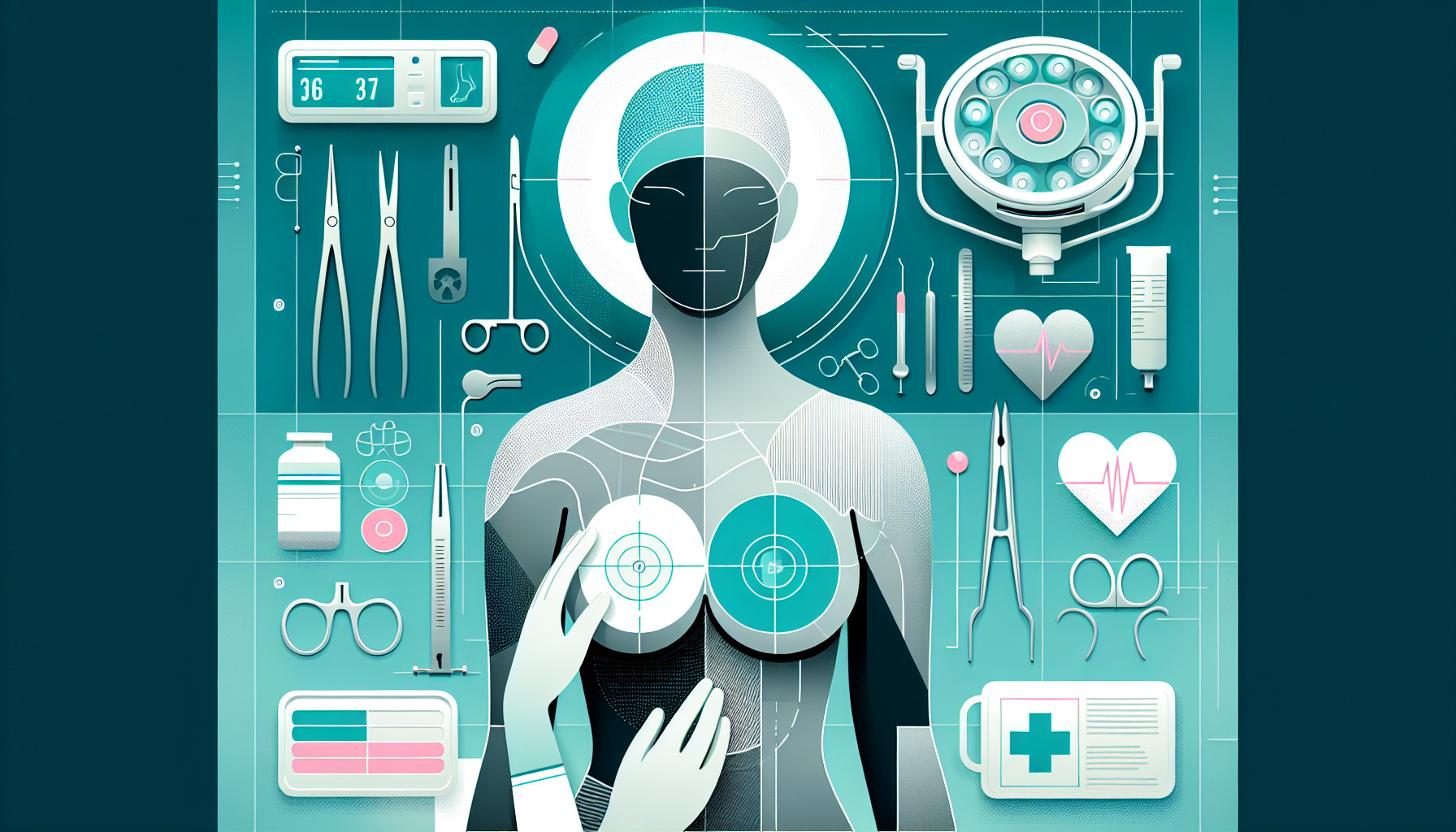Our Summary
This research paper discusses the process of total breast reconstruction after a mastectomy, which is the surgical removal of one or both breasts. In order to create a natural and aesthetically pleasing result, a significant amount of skin and volume are required. This is to make sure the reconstructed breast has the right shape and projection. To achieve this, doctors may use multiple skin flaps from different areas of the body, like the abdomen, thigh, lumbar region, or buttock. These skin flaps can be used in various combinations for both unilateral (one breast) and bilateral (both breasts) reconstruction. The main goal is to create a breast that looks natural and pleasing, while also ensuring the areas where the skin was taken from heal well and do not suffer long-term damage.
FAQs
- What is the goal of total breast reconstruction after a mastectomy?
- What areas of the body can be used to create skin flaps for breast reconstruction?
- Can skin flaps be used for both unilateral and bilateral breast reconstruction?
Doctor’s Tip
One helpful tip a doctor might tell a patient about breast reconstruction is to carefully follow post-operative care instructions to promote proper healing and optimal results. This may include avoiding strenuous activities, wearing a supportive bra, and attending follow-up appointments to monitor progress and address any concerns. It is also important to maintain a healthy lifestyle, including regular exercise and a balanced diet, to support overall healing and well-being during the recovery process.
Suitable For
Patients who are typically recommended for breast reconstruction after a mastectomy include:
Patients who have undergone a mastectomy for breast cancer treatment and desire to restore their breast shape and appearance.
Patients who have a high risk of developing breast cancer and have chosen to undergo a prophylactic mastectomy.
Patients who are physically and emotionally healthy enough to undergo the surgical procedure and recovery process.
Patients who have realistic expectations about the outcome of the reconstruction and are willing to participate in the decision-making process with their healthcare team.
Patients who do not have any medical conditions that would increase the risk of complications during surgery or affect the healing process.
It is important for patients considering breast reconstruction to discuss their options with their healthcare provider and plastic surgeon to determine if they are a suitable candidate for the procedure. The decision to undergo breast reconstruction is a personal one and should be based on individual preferences, goals, and medical considerations.
Timeline
Before breast reconstruction:
- Patient is diagnosed with breast cancer and undergoes a mastectomy to remove one or both breasts.
- Patient discusses options for breast reconstruction with their healthcare provider, including timing, type of reconstruction, and potential risks and benefits.
- Patient may undergo additional treatments such as chemotherapy or radiation therapy before considering breast reconstruction.
- Patient undergoes medical evaluations and tests to determine if they are a suitable candidate for breast reconstruction.
After breast reconstruction:
- Patient undergoes the surgical procedure for breast reconstruction, either immediately following the mastectomy (immediate reconstruction) or at a later time (delayed reconstruction).
- Patient may experience pain, swelling, and discomfort in the days and weeks following surgery.
- Patient works with healthcare providers to monitor the healing process and address any complications that may arise.
- Patient may undergo additional surgeries for adjustments or revisions to achieve the desired outcome.
- Patient undergoes post-operative care, including physical therapy, to aid in the recovery process and ensure proper healing.
- Patient may experience emotional and psychological challenges related to body image and self-esteem, and may benefit from counseling or support groups.
- Patient eventually achieves a reconstructed breast that looks natural and feels comfortable, restoring their sense of femininity and confidence.
What to Ask Your Doctor
Some questions a patient should ask their doctor about breast reconstruction may include:
- What are the different options for breast reconstruction after a mastectomy?
- What are the risks and potential complications associated with breast reconstruction surgery?
- How long is the recovery period after breast reconstruction surgery?
- Will I need additional surgeries or touch-up procedures after the initial reconstruction?
- How will the reconstructed breast(s) look and feel compared to my natural breast(s)?
- What are the limitations or constraints of breast reconstruction surgery?
- How will breast reconstruction surgery affect my ability to undergo future mammograms or breast cancer screenings?
- What are the implications for breastfeeding or nipple sensation after breast reconstruction?
- Can I choose the size, shape, and placement of the reconstructed breast?
- What type of scarring can I expect after breast reconstruction surgery, and how can it be minimized or treated?
Reference
Authors: Haddock NT, Teotia SS. Journal: Clin Plast Surg. 2023 Apr;50(2):325-335. doi: 10.1016/j.cps.2022.10.008. Epub 2023 Jan 25. PMID: 36813410
